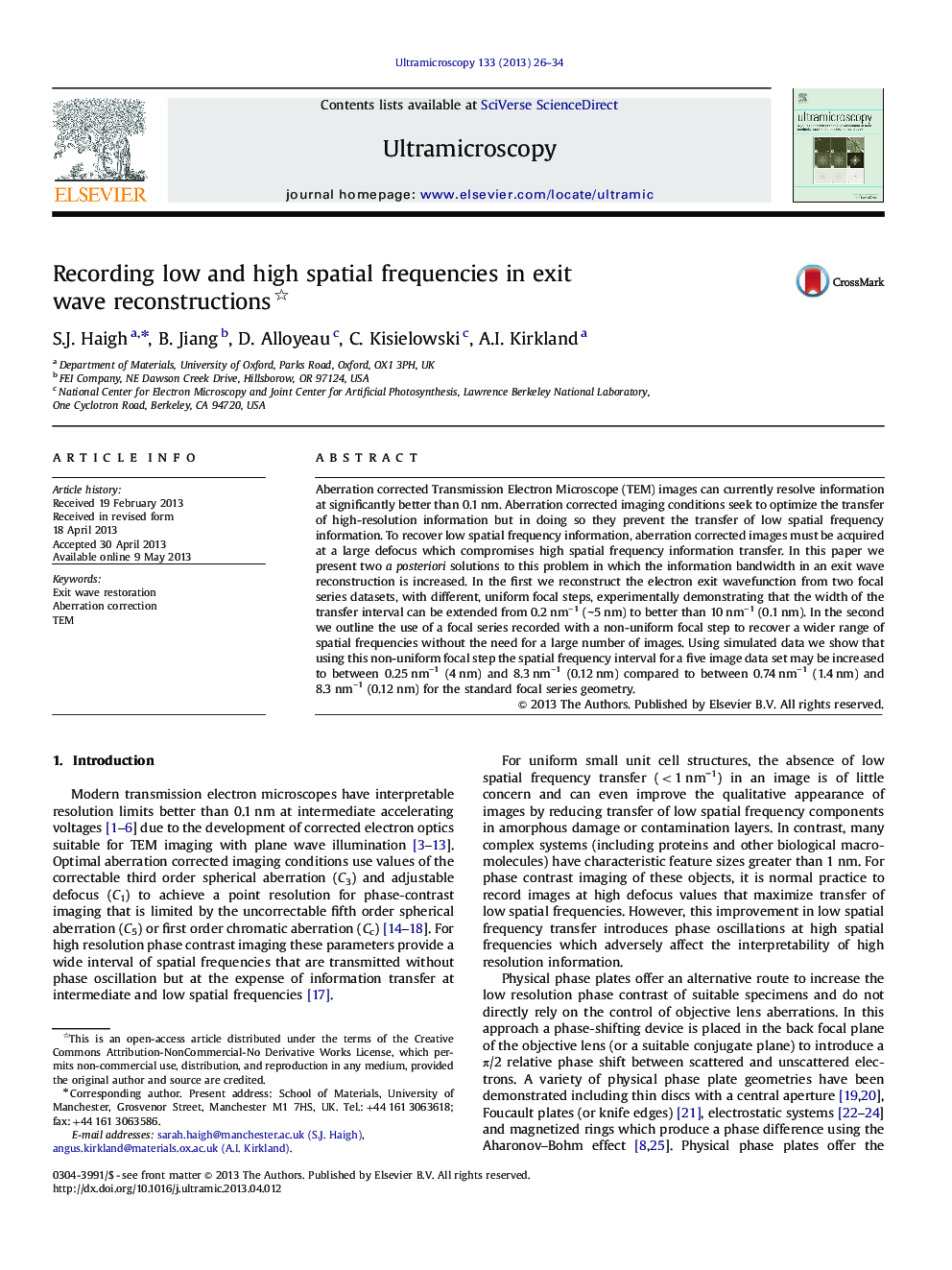| Article ID | Journal | Published Year | Pages | File Type |
|---|---|---|---|---|
| 8038495 | Ultramicroscopy | 2013 | 9 Pages |
Abstract
Aberration corrected Transmission Electron Microscope (TEM) images can currently resolve information at significantly better than 0.1Â nm. Aberration corrected imaging conditions seek to optimize the transfer of high-resolution information but in doing so they prevent the transfer of low spatial frequency information. To recover low spatial frequency information, aberration corrected images must be acquired at a large defocus which compromises high spatial frequency information transfer. In this paper we present two a posteriori solutions to this problem in which the information bandwidth in an exit wave reconstruction is increased. In the first we reconstruct the electron exit wavefunction from two focal series datasets, with different, uniform focal steps, experimentally demonstrating that the width of the transfer interval can be extended from 0.2Â nmâ1 (â¼5Â nm) to better than 10Â nmâ1 (0.1Â nm). In the second we outline the use of a focal series recorded with a non-uniform focal step to recover a wider range of spatial frequencies without the need for a large number of images. Using simulated data we show that using this non-uniform focal step the spatial frequency interval for a five image data set may be increased to between 0.25Â nmâ1 (4Â nm) and 8.3Â nmâ1 (0.12Â nm) compared to between 0.74Â nmâ1 (1.4Â nm) and 8.3Â nmâ1 (0.12Â nm) for the standard focal series geometry.
Keywords
Related Topics
Physical Sciences and Engineering
Materials Science
Nanotechnology
Authors
S.J. Haigh, B. Jiang, D. Alloyeau, C. Kisielowski, A.I. Kirkland,
